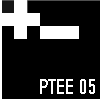The Cathedral of St. Peter and St. Paul
 |
|
The Cathedral of St. Peter and St. Paul is located on the top of a hill, known as Petrov, on the presumed site of the former Brno castle (including a chapel) that dates from the 11th and 12th centuries. After the castle`s demise the free-standing Romanesque basilica was rebuilt as a Gothic cathedral in the 13th century, further modified in the 15th and 16th centuries, and converted to the Baroque style in the 18th century. Its current neo-Gothic form dates from the turn of this century. Since 1777 the cathedral has been the seat of the Brno bishopric. The original church crypt from the 12th century is now accessible to visitors. |
Leoš Janáček’s monument
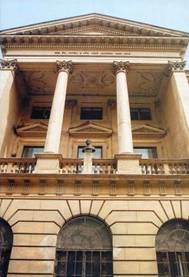 |
|
House where “Leoš Janáček lived, composed and taught” is placed in Kounicova Street. The building in Kounicova Street housed the organ school and conservatory. Until his death Janáček and his family lived in the garden house built according to his wish. Today it is Leoš Janáček’s monument.
|
Park in front of the Provincial House, a much frequented place of rest
Trade Fairs Brno (BVV)
Brno is well known as a place of internationals Trade fairs (about 30 per year). The most famous trade fair is the international Engineering Trade fair held in autumn, the other is INVEX computer Brno. Every year, same twenty exhibitions and specialized trade fairs are held here.
Entrance into exhibition centre
Pavilion Z with 10.527 m2 of exhibition space and the unique dome was built in 1959
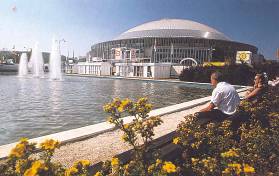 |
|
The most distinct post-war construction is the monumental circular Z pavilion. Its assembled steel cupola with a diameter of 122 m was designed by F. Lederer. |
Tugendhat Villa - UNESCO World Cultural Heritage Sites
Architecture in the 1920s was characterised by the opening of new roads of creative thought, which reflected the avant-garde trends that were searching for an image of life after the First World War. The designs of glass skyscrapers by the German architect Ludwig Mies van der Rohe in 1919-1922 broke traditional forms of enclosed spaces with their transparent walls and open-plan floor spaces, which have made possible new and progressive technology for the manufacture of glass, steel and ferro-concrete.
The Brno work of Mies van der Rohe began to take shape rapidly in June 1929. By the end of October of the same year the frame of the building was completed, in summer 1930 the internal work was complete, and the house was inhabited by the end of the year.
The Tugendhat Villa in Brno-Černá Pole, has met with great acclaim and interest as early as at the moment it was buit and its fame has grown with time. The Tugendhat Villa in Brno, the most prominent completed European work of its designer, has become one of the milestones in the history of world 20th century architecture. Its importance was recognised in 2001 by its inclusion amongst the UNESCO World Cultural Heritage Sites.
Austerlitz 1805 - Napoleon’s battle
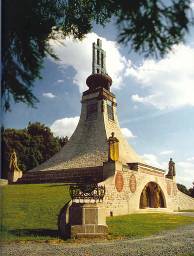 |
|
The Peace monument on the Prace hill- a memento of nearby Austerlitz. On the 2 nd of December 1805, one of the most famous battles of the Napoleonic wars, the Battle of Austerlitz, took place to the east of Brno. On the highest place of the battlefields, the Prace hill, decisive for the battle, a Peace Monument was built, an Art Nouveau stone chapel and a memorial to warn people against the horror of wars. |
Building of the Mechanical Engineering Faculty and Faculty of Electrical Engineering and Communication of BUT (Brno University of Technology)
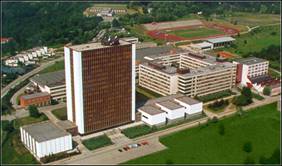 |
|
Brno University of Technology (BUT) is the second largest and the second oldest technical university in the Czech Republic. The Faculty of Electrical Engineering was reestablished in 1959, and in 1993 was renamed Faculty of Electrical Engineering and Computer Science to reflect the enormous growth of computers and their applications. On 1st January 2002 Faculty of Electrical Engineering and Computer Science was transformed into the Faculty of Electrical Engineering and Communication (FEEC) and the new Faculty of Information Technology (FIT) was established.
The Faculty of Electrical Engineering and Communication provides education in Electronics and Communication, Cybernetics, Control and Measurement Techniques, Microelectronics and Technology, Power Electrical and Electronic Engineering and Teleinformatics. There are 12 departments at the Faculty, with about 180 teachers, 190 Ph.D. students and more than 2,500 students in Bachelor´s and Master´s study programmes. The quality of teaching is guaranteed by accreditation procedures, one at the national level by the Czech Ministry of Education, another by the European Association for Education FEANI. |
|
